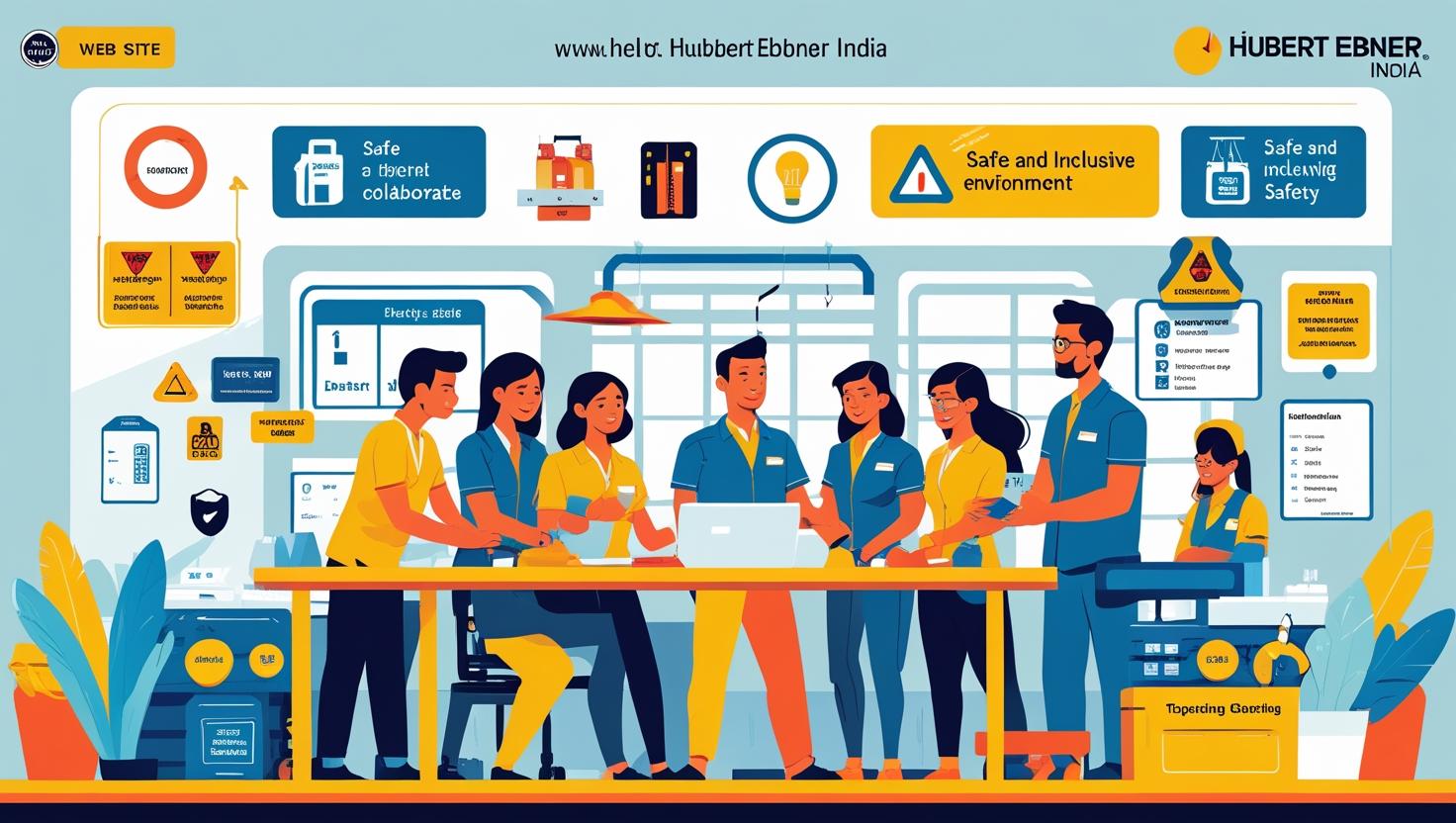How to Build a Safety-First Work Culture
Workplace safety is more than just compliance—it’s about creating an environment where employees feel protected, valued, and empowered to prevent accidents before they happen. For industries where road safety, transport, and heavy machinery are involved, a safety-first work culture is not optional; it’s essential.
At Hubert Ebner India, we’ve seen how organizations thrive when safety becomes a shared responsibility. This guide will walk you through the key steps to embed safety into your company’s DNA.
Why Safety-First Culture Matters
- Fewer Accidents: Reduces injury risks and downtime.
- Higher Productivity: Healthy employees work more efficiently.
- Stronger Reputation: Clients trust businesses with strong safety records.
- Employee Retention: Workers are more loyal to companies that care about their well-being.
Key Steps to Building a Safety-First Work Culture
1. Leadership Commitment
- Safety culture starts at the top.
- Leaders must model safe behavior and make safety part of daily conversations.
- Allocate budget for safety training, equipment, and awareness programs.
2. Comprehensive Safety Training
- Conduct regular road safety and workplace hazard training for all employees.
- Use Hubert Ebner’s interactive training programs for better retention.
- Include modules on defensive driving, PPE usage, and emergency protocols.
3. Clear Communication Channels
- Create an open-door policy for reporting safety concerns without fear.
- Use visual reminders—posters, signboards, and digital notices—to keep safety top-of-mind.
- Regularly update employees about safety changes and improvements.
4. Recognize & Reward Safe Behavior
- Introduce “Safety Champion of the Month” awards.
- Celebrate teams that achieve accident-free milestones.
- Small incentives can motivate big changes in workplace habits.
5. Continuous Risk Assessment
- Conduct regular inspections to identify potential hazards.
- Use incident reports as learning tools, not as punishment.
- Update safety protocols as new risks emerge.
6. Empower Employees
- Train staff to stop unsafe work without fear of consequences.
- Involve employees in creating safety checklists and improvement plans.
- Make them partners, not just participants, in safety initiatives.
7. Leverage Technology for Safety
- Use telematics and GPS to monitor driving behavior.
- Install dashcams and speed alerts for fleet safety.
- Use digital apps for hazard reporting and safety checklists.
Real-Life Example: Road Safety in Fleet Operations
A logistics company partnered with Hubert Ebner India to train its drivers on defensive driving and fatigue management. Within six months:
- Accidents dropped by 35%.
- Fuel efficiency improved by 12% due to safer driving habits.
- Employee morale increased as drivers felt more valued.
Building Safety as a Core Value
- Make safety part of the onboarding process for every new employee.
- Integrate safety performance into annual reviews.
- Remember—safety is not a cost; it’s an investment.
Conclusion
Creating a safety-first culture requires consistent effort, strong leadership, and active employee participation. When safety becomes a habit, not just a rule, businesses experience fewer accidents, better productivity, and a happier workforce.
At Hubert Ebner India, we specialize in training programs and consultancy services that help businesses embed safety at every level.




